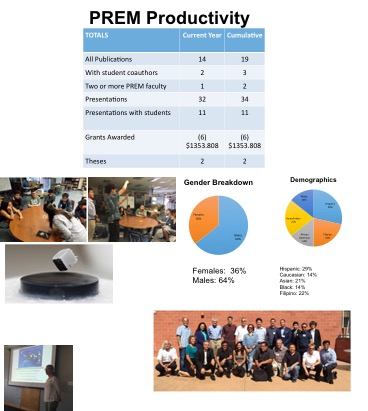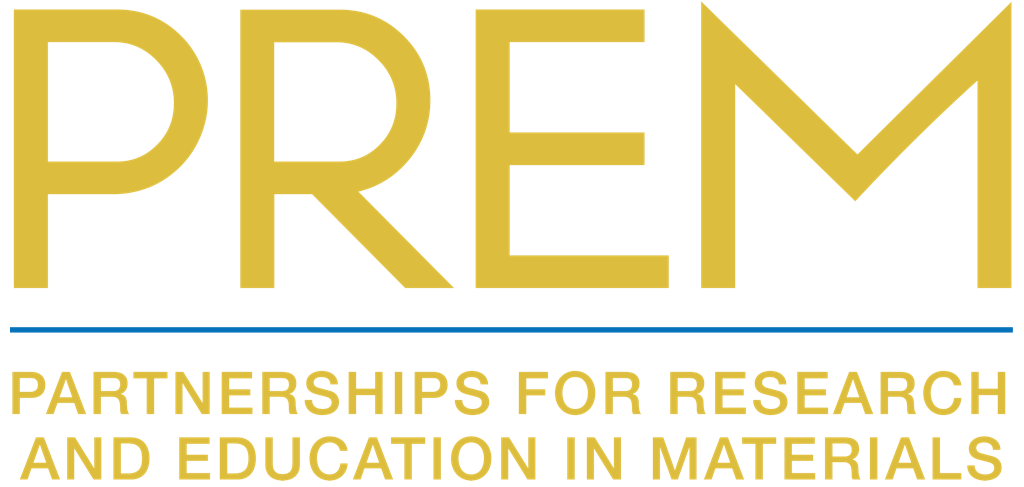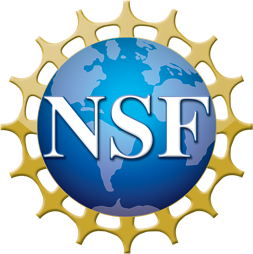PREM 2017 Intellectual Merit Highlights
 T1: Magnetic and Electric Properties with Applications
T1: Magnetic and Electric Properties with Applications
Designing methods and devices for efficient mutual control of electricity and magnetism
Developing low-power consumption
We designed and fabricated Graphite-fiber reinforced copper composite wires to meet the requirements of wire strength of about 400% of pure copper’s strength while retaining at least 80% of electrical conductivity of a copper wire.
T2: Photochemistry with Novel Materials and Applications
Designing alternative, more efficient pathways and tools for controlling photochemistry of natural and artificial processes in specific applications.
We found excited oxygen (singlet oxygen) is rapidly quenched by Cd-SR surfaces, and will oxidize Cd-SR moieties. Using them in combination with photosensitizers may lead to self-destruction of the material.
T3: Microfluidics
In the process of developing new gel-based microfluidic batteries to power small electronic devices and novel wax-based printing technologies for microfluidic devices.
We found an increase of substrate concentration is proportional to an increase in pumping speed.
PREM Annual Retreat
The PREM Annual Retreat was attended by our Advisory Board as well as our faculty, Deans, President, and PSU Collaborators
Retreat Highlights:
-Well attended
-Numerous Presentations
-Advisory Board Meeting
-Networking
-Useful Discussions
-Specific Outcomes
Advisory Board Report Excerpt:
“The retreat was well organized and clearly shows the impact of collaborations between research-intensive Ph.D. granting programs and the three involved M.S. granting programs at CSULA. It plays to the strengths of both institutions. The participant students were excited, and very engaged.”
Outreach Efforts:
Students from CSULA have gone to high schools in the area to conduct demonstrations on:
-Superconductivity - allows electrons to move through the material without resistance.
-Diamagnetism - makes the material repel to both north and south poles of a magnet.
-FCC to BCC transitions with iron wire - current is applied to iron wire to make the transition from ferrite to austenite. Thermo couples are used to approximate the transition using its phase diagram.



